On August 8, 2018, another heavy report on exosomes "Exosomal PD-L1 contributes to immunosuppression and is associated with anti-PD-1 response" was published in the top journal "Nature" for "How to Cancer The problem of fighting the immune system in the whole body has brought about a subversive understanding.
It is confirmed that the exocytic secreted by melanoma cells carries the PD-L1 protein, and can directly bind to T cells, inhibit the function of T cells, and then fight the immune system. This finding is a good explanation of why the immune system of cancer patients is weakened and why PD-1 targeted therapy has no effect on 70% of melanoma patients.
The important role of exosomes in tumor progression has repeatedly been mentioned in high-end academic articles. This time, the key discovery once again pushed the exosomes to the forefront. If the contents of the tumor exosomes can be effectively screened, it is likely to have a subversive effect on the early screening and diagnosis of the tumor.
With the rise of the liquid biopsy industry, liquid biopsy companies using exosome technology have received much attention in the industry. Among many exogenous related companies, Exosome Diagnostics is undoubtedly the most noteworthy one.
What is exosomes?
Exosomes are a class of extracellular vesicles with a diameter of 40-100 nm and a complete membrane structure, which are mainly responsible for the transport of substances and information transmission between cells. The structure of exosomes is similar to that of vesicles. The main difference is that vesicles are produced by budding, while exosomes are invaginated by cell membranes and released after intracellular packaging. Therefore, the exosomes are smaller than the vesicles, and the contents of the package are richer and the structure is more stable.
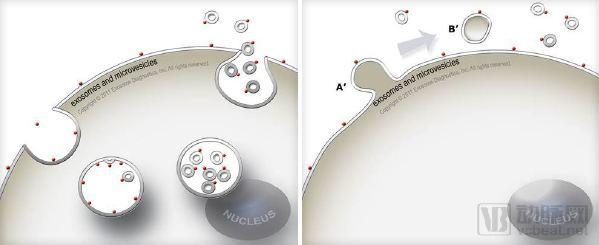
Figure 1: Difference between exosomes and vesicle packaging, left image is exosomes
Exosomes were discovered in 1983 and were officially named exosome in 1987 and were first thought to be cell waste. Later studies have shown that exosomes are encapsulated with cell-specific proteins, liposomes and nucleic acids, and can serve as signaling molecules to transmit information to other cells. Further research has found that exosomes play an important role in many physiological and pathological processes, such as antigen presentation in immunization, tumor growth and migration.
All cells secrete exosomes. However, compared to normal cells, diseased cells, especially tumor cells, secrete a greater amount of exosomes. These exosomes enter the peripheral blood and can be collected and used as a target for early screening of tumors. Therefore, exosomes have become one of the hottest topics in the liquid biopsy industry in recent years. In addition, exosomes can be used as a high-quality targeted drug delivery vehicle due to their high stability and easy to be absorbed by cells.
In recent years, with the rise of the liquid biopsy industry, exosomes have attracted much attention as a unique detection target, and related companies using exosome technology have sprung up. However, long before this craze, there was already a company that was far-sighted to target the exosome-related industry. It is Exosome Diagnostics (hereinafter referred to as ExosomeDX).
The discovery of exosome contents caught the attention of the founder of the company
ExosomeDX was incorporated in 2008 in New York, USA. Before 2008, people simply thought that exosomes only carried liposomes and proteins. Dr. from the Massachusetts General Hospital in 2008. The Johan Skog team published a report on Nature Cell Biology, which for the first time showed that exosomes also carry large amounts of nucleic acids, including DNA and multiple RNAs. This milestone discovery means that exosomes isolated from the patient's blood can be used as targets for detecting tumor gene mutations. The two founders of ExosomeDX were keenly aware of this business opportunity and registered ExosomeDX in the same year.
James R., one of the two founders McCullough received a Bachelor of Arts degree from Boston University in 1990, followed by a Master of Business Administration degree from Columbia Business School in 1995. Prior to founding ExosomeDX, James worked as a CEO at AusAm Biotechnologies. It is precisely because of the inauguration of the biological company that the master of business administration from the liberal arts has learned about the exosomes and is involved in the exogenous diagnosis industry.
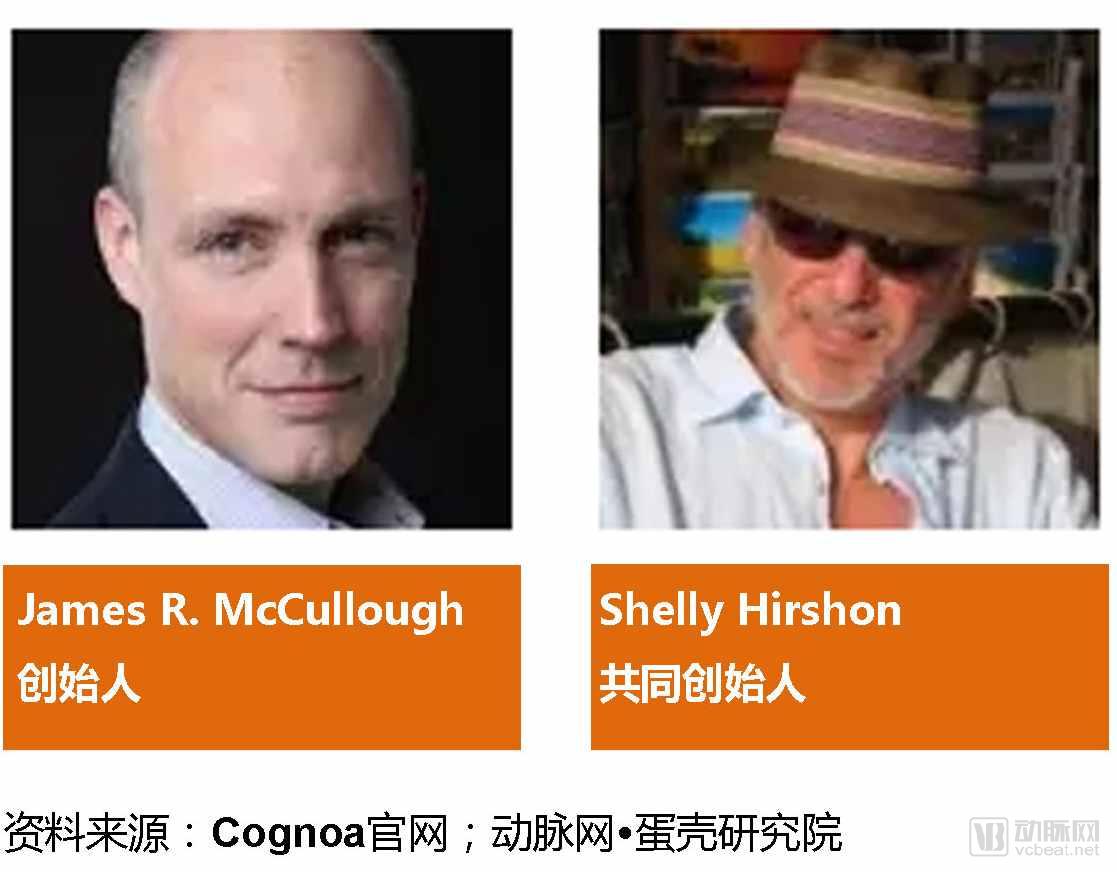
Figure 2: Two founders of ExosomeDX
At the time, exosomes were a new field for the scientific research industry. Before 2008, there were only a few hundred research papers related to exosomes. In this situation, the two founders chose to start a foreign body diagnostic company can be described as courage. It turns out that their judgment is very accurate. After 2008, the heat of exosomes increased explosively. In 2017 alone, more than 1,700 articles on exosomes were published. And ExosomeDX takes the lead in this wave.
Today, after ten years of development, ExosomeDX holds more than 200 patents and is a well-deserved benchmark in the exosome diagnosis industry. While other companies in the industry are still exploring the product line, ExosomeDX has introduced several liquid biopsy products based on exosome technology. And all this is due to the prospective vision of the founder.
Liquid biopsy technology: step by step replacement of traditional tissue biopsy
In the traditional pathological plan, the pathology of the patient is detected by the excised diseased tissue, so the pathology is usually known after the surgery. This situation is not conducive to the patient's treatment process, and secondly, early screening is not possible. With the development of medicine, liquid biopsy has received great attention because of its easy-to-obtain and rich content. It is expected that liquid biopsy can assist traditional methods in early screening and diagnosis to make a more accurate judgment of the patient's condition.

Figure 3: Liquid biopsy vs tissue biopsy
The main targets of liquid biopsy are three types, circulating tumor DNA (ctDNA), circulating tumor cells (CTC) and exosomes. In addition to this, there are platelets and the newly discovered circulating RNA, but it is not currently popular.
ctDNA is a type of tumor DNA fragment in the blood. There are many DNA fragments floating in the blood, which may come from any cell around the body, including tumor cells. DNA fragments from normal cells are typically between 100 and 200 bp and will entangle on histones. DNA fragments from tumors are shorter than normal cells, and some of these very short DNA fragments may be involved in tumor metastasis. Current technology has been able to isolate DNA fragments of tumors and further assist in the treatment of patients. As the three-generation sequencing technology and digital PCR technology continue to mature, more hidden information in ctDNA will be discovered.
CTC should be the first of the three to be discovered. As early as 1869, scholars discovered tumor cells in the blood, which is considered to be the earliest record of CTC. At first, people mainly focused on the content of CTC in the blood, and predicted the development of the tumor by detecting the content of CTC. However, recent studies have shown that monitoring the amount of CTC in the blood has no significant value for the patient's prognosis. Therefore, the current research on CTC has turned to enrichment, cultivation and sequencing. Help patients with treatment by understanding the genetic information of tumor cells.
Among the three main liquid biopsy targets, exosomes have become the hottest topic in the recent liquid biopsy industry due to their wide distribution, high content and stable structure. All cells secrete exosomes, but studies have shown that tumor cells secrete a greater amount of exosomes than normal cells. Therefore, even if the current technology cannot completely separate the exosomes derived from normal cells and tumor cells, the blood exosomes can also characterize the development of the tumor to some extent.
With the gradual increase in the heat of the exogenous industry, the emerging companies with large amounts of financing have emerged in an endless stream, and established companies have also joined the ranks of exosomes. However, to date, only ExosomeDX has introduced a mature exogenous fluid biopsy product that leads the industry.

Figure 4: ExosomeDX Product Overview
Launched the first product in the field of exosomes testing in 2016
In January 2016, after eight years of crouching ExosomeDX launched its first product, ExoDX Lung (ALK). Based on exosome detection technology, this product screens for EML4-ALK mutations in patients with non-small cell lung cancer, and assists doctors in determining whether patients can be treated with ALK inhibitors. This is not only the first product of ExosomeDX, but also the first product in the exosome diagnosis industry. It is a true industry milestone.
Just in September of the same year, ExosomeDX launched its second product, ExoDX Prostate (IntelliScore) (EPI). The product, by detecting three genetic indicators of exosome RNA in urine, combined with proprietary algorithms, yielded a score associated with the risk of prostate cancer. This score can help the doctor judge whether the subject has prostate cancer.

Figure 5: EPI testing process
Compared with traditional methods, the biggest advantage of this product is that it can be screened only with urine, which greatly reduces the risk of unnecessary prostate biopsy. Complications associated with prostate biopsy include discomfort, temporary incontinence, impotence, and severe infections. In contrast, urine biopsy is completely risk-free and easy to operate, maximizing the patient's physical and mental health.
Broad spectrum testing: the advantages of liquid biopsy
In August 2017, ExosomeDX introduced a new broad-spectrum inspection product, the MedOncAlyzer 170. This product detects functional mutations in tumor-associated genes using exosomal RNA in blood/plasma and circulating tumor DNA. The patient only needs to provide a minimum of 0.5ml of sample to complete the detection of 170 genes and 82,000 mutation types with a sensitivity of 99.9%. This high depth and breadth can not only prove the strength of ExosomeDX, but also demonstrate the potential of the exogenous diagnostic industry.

Figure 6: Introduction to the MedOncAlyzer 170
Based on testing, expand product range
ExosomeDX is not satisfied with their achievements so far in the field of lung cancer and prostate cancer. At the annual meeting of the American Association for Cancer Research in August 2017, ExosomeDX announced their latest advances in the field of breast cancer, confirming the exosomes isolated from the plasma of patients with stage II breast cancer, and tissue samples from patients. The RNA signal is almost identical.
Already the chief scientist of ExosomeDX Dr. . Johan Skog said in a speech: "This technology allows us to detect accurate RNA signals from as little as 1 ml of plasma, eliminating the need for tissue in tumor RNA detection. We achieved the same depth in tissue detection as RNA samples. Breadth, including more than 12,000 mRNAs and more than 1000 lncRNAs. Breast-specific exosomes have almost the same specificity as the corresponding tissues."
ExosomeDX's self-developed Shahky system focuses on difficult-to-conquer exosome protein analysis. This system is capable of detecting specific exogenous protein markers of certain diseases in biological fluids including blood, cerebrospinal fluid, plasma, serum, urine, saliva, and ascites. ExosomeDX claims that the sensitivity of the Shahky system is 100 times higher than the ELISA and 1000 times higher than the WB.
In addition, ExosomeDX has collaborated with Qiagen, Merck and other companies to develop exosome-related technologies. The serum/plasma exosomal RNA extraction kit developed in collaboration with Qiagen has been released and is well received in the industry.
Different products are for different customers, and the B-end C end goes hand in hand.
From the current situation, ExosomeDX's product line is multi-polar, for research, pharmaceutical companies, doctors and individual users. The total number of products is small, but they are all in the leading position in similar products.
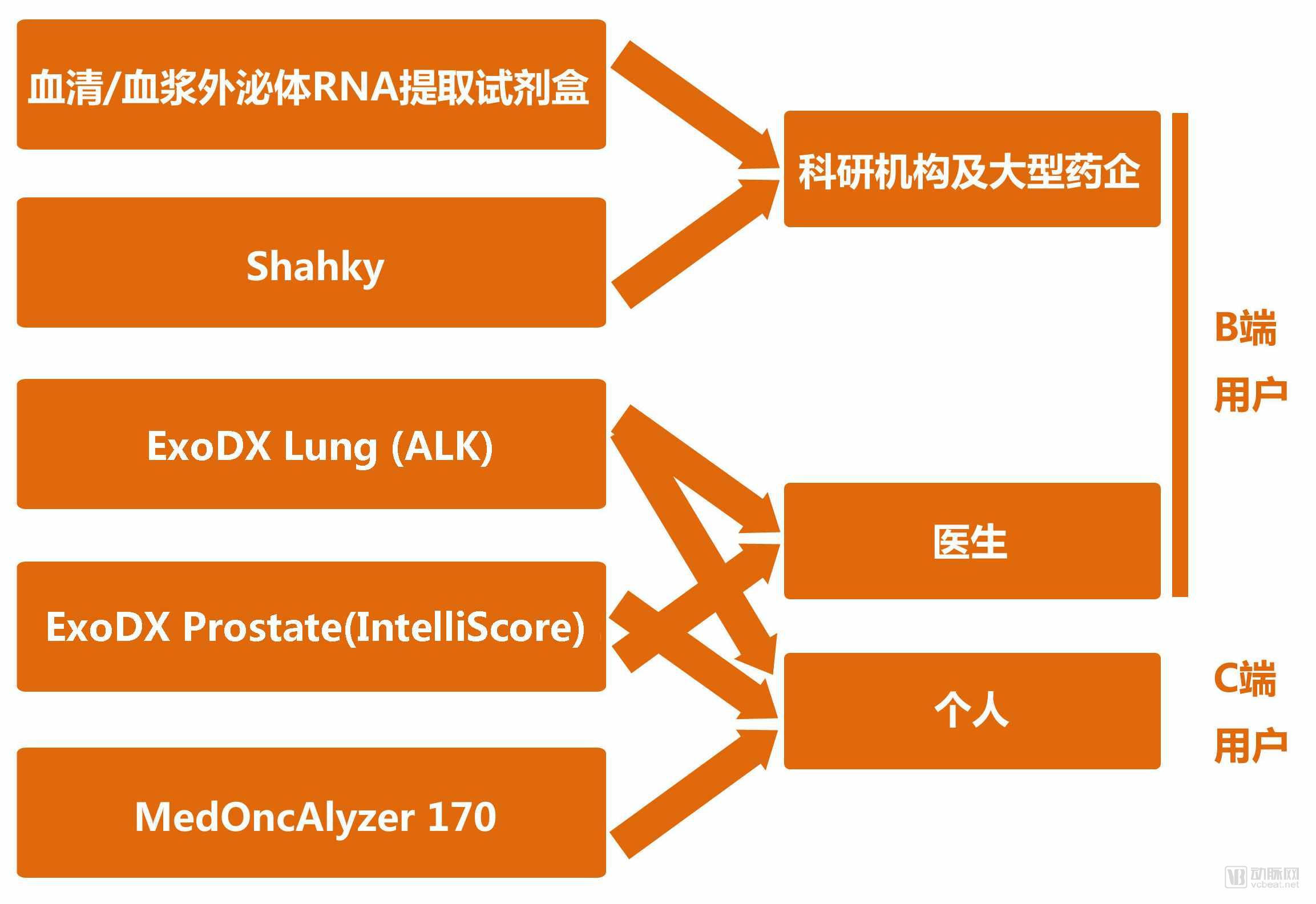
Source: ExosomeDX official website; Arterial Network· Eggshell Institute
Figure 7: ExosomeDX product flow
From the perspective of development, ExosomeDX will maintain its competitiveness on the B side in the future development, and strive to improve the credibility of the enterprise and the simplicity of the product, and at the same time expand the C-end market more conveniently, and facilitate user self-test.
Established ten years ago by Bio-Techne
Since its inception, ExosomeDX has experienced three rounds of financing totaling $112.1 million. Although it is not the highest in the exogenous industry, it is also among the best. Just in June this year, ExosomeDX and Bio-Techne reached an acquisition agreement, Bio-Techne will acquire ExosomeDX for $250 million, and if it reaches a certain milestone in the future, it will add an additional $325 million in acquisitions. That is, the maximum purchase amount may reach 575 million.
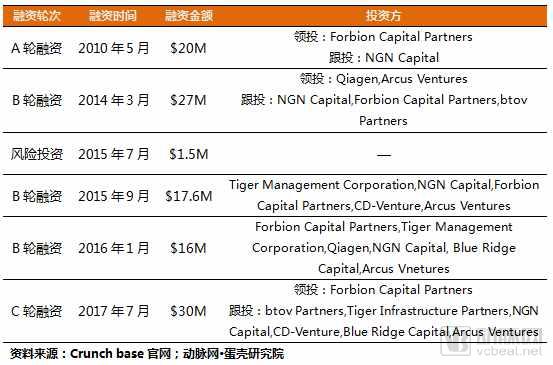
Figure 8: ExosomeDX Financing Statistics
For this acquisition, Bio-Techne CEO, Charles R. Kummeth said: "We are very excited to get the ExosomeDX platform and incorporate it into Bio-Techne's system. ExosomeDX technology will change the rules of the game, and Bio-Techne will also take the lead in the rapidly expanding liquid biopsy market. position."
In-house benchmarking company - Codiak Biosciences
If the status of ExosomeDX in the industry may be threatened, then the biggest source of this threat must be Codiak. The young company, which was established in June 2015, has a total of 168.5M in three rounds of financing by exogenous express trains, exceeding ExosomeDX's total financing for 10 years.

Figure 9: Codiak vs ExosomeDX
Unlike ExosomeDX, Codiak's two founders, Raghu Kalluri and Eric Lander, are both academics. Raghu Kalluri is the chairman of the Transfer Research Center at the MD Anderson Cancer Institute at the University of Texas. In June 2015, he published a text on Nature describing the significance of GPC1 in the diagnostic industry of pancreatic cancer exosomes, which is the basis for the establishment of Codiak. Eric Lander is a geneticist, molecular biologist and mathematician who has participated in the Human Genome Project as a lead leader.
This lineup of founders has made investors optimistic about this innovative company, and the three rounds of investment continue to rise. Codiak has determined that it will focus on drug development based on exosome technology and has obtained access to research-based pancreatic cancer drugs found at the MD Anderson Cancer Institute at the University of Texas, but so far there is no Codiak product. Specific news.
Foreign companies in the foreign body industry
1. Regeneus
Founded in 2007, Regeneus' core philosophy is to use stem cell technology to treat osteoarthritis, tumors, inflammation, burns and wound recovery. Initially the company's business did not involve exosomes related fields. After the exosome heat rose, Regeneus began to try to develop stem cell exosomes, and has achieved some success.
In September 2017, Regeneus issued a report that the drug Synecus, which was developed using secreted extracts of mesenchymal stem cells (including cytokines, growth factors and exosomes), had better analgesic effects than morphine in topical use. The bioactive molecules contained in Sygenus are effective in reducing pain and inflammation and promoting accelerated wound healing and recovery. Its efficacy has exceeded the mesenchymal stem cell secretions reported before.
In February 2018, Regeneus announced that Sygenus gel based on exosome technology has a significant effect on adult acne and is well tolerated within six weeks. If this product is available, the Sygenus gel will be the first drug product based on exosome technology. Regeneus has applied for patents for Sygenus in Australia, China, Europe, Japan, and the United States.
2. Exocobio
Compared with the above companies, Exocobio, which was established in South Korea in January 2017, is much younger. In addition to the short set-up time, Exocobio's entry point is also unique. I don't know if it was affected by the developed cosmetic and cosmetic industry in Korea. Exocobio decided to apply exosome technology to innovative treatments and cosmeceuticals. Its company's mission is to focus on stem cell exosomes, develop innovative treatments and beauty products.
From a technical point of view, the structure of the exosomes is stable and easy to absorb. It can indeed be used in the beauty industry. So Exocobio got $11M in the A round of financing in May 2017, which is not a good result for a company that has just been established for five months. So far Exocobio has no specific news about the product. It remains to be seen what the company will do in the future.
Status of domestic and foreign body related industries
At the same time as foreign-related studies on exosomes have been carried out abroad, domestic research institutions have begun to gradually intervene in this new field. According to incomplete statistics, 62 of the national key projects in 2015 were related to exosomes, and by 2017, this number had jumped to 314, which was five times in two years. In addition to the newly applied topics, many research groups have added research content related to exosomes to their existing research content to improve the novelty of the content. In terms of scientific research papers, research papers related to exosomes published by domestic institutions have increased year by year in recent years, with only 71 articles in May 2018, and many of them have high-level papers.
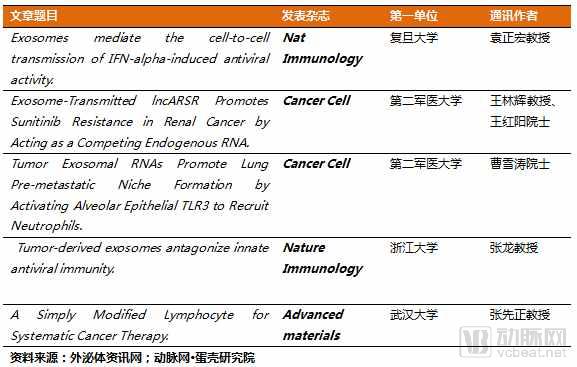
Figure 10: High-level academic papers related to exosomes published in recent years (IF>20)
Corresponding to the attitude of the domestic research industry is the coldness of the enterprise. For the time being, it has not been known that large pharmaceutical companies have indicated that they are conducting research on exosome-related products. Some scientific research suppliers have independently developed exosome extraction products, but they are also limited to scientific research. However, there are several innovative companies with the goal of exosome diagnosis, such as Enze Kangtai, Carbon Code Technology.
1. Enze Kangtai
Enze Kangtai Biotechnology Co., Ltd. was established in 2017 with a registered capital of 12.5 million. It is a company specializing in the research and development of exosome research services and exosome molecular diagnostic products. At present, the company has established a variety of separation and enrichment methods including ultracentrifugation, density gradient centrifugation, immunocapture and PEG precipitation, which can achieve stable, rapid, simple operation and low cost exosomes separation, which is the clinical application of exosomes. Laid a good foundation.
CEO holes Guan Yi graduated from Wuhan University of Life Science and Technology Base Class, worked in well-known companies as gene sequencing, director of bioinformatics, bio-cloud platform app development department director and medical director of career. The leading and participating research cooperation projects were published in top international journals with a total IF of over 150. In the field of bioinformatics, 8 patents and a number of software copyrights were granted.
The company is led by Professor Richard Simpson, a top expert in the field of exosome research and a member of the Australian Institute of Technical Science and Engineering. Richard Simpson was the head of the Human Proteome Group and published more than 400 academic papers. In 2006, he began to turn to the field of exosomes. His main research direction is the role of exosomes in the diagnosis of colorectal cancer. He has published more than 60 papers so far.
Enze Kangtai won the angel round investment of Fengfeng Capital in October 2017, and the specific amount was not disclosed. At present, the company has launched a complete solution for exosome for scientific research, and there is no news of detection products based on exosome technology.
2. Carbon code technology
Carbon Code Technology was established in 2017 with a registered capital of 5 million. The core concept is to combine artificial intelligence with exosome technology to establish an early detection system for artificial intelligence tumors based on exosomes. The method is to first extract the blood exosomes of normal people and tumor patients, and perform RNA sequencing to obtain data. Subsequent artificial intelligence deep learning was used to compare early human and patient exosomal RNA sequences to arrive at an algorithm that could be used for early screening.
The core team members of Carbon Code Technology are highly educated, overseas background, and have extensive experience in their own industry. Du Gang, founder and CEO, graduated from Jinan University with a Ph.D. degree and concurrently a visiting scholar at New York University School of Medicine. He has more than 10 years of clinical first-line work experience and is familiar with clinical big data mining and disease modeling. Technical Director Chen Wei, Ph.D. in Bioinformatics from Purdue University, USA, has worked in the United States for 14 years and specializes in the second-generation sequencing data analysis and bioinformatics software development. Algorithmic scientist Liu Cong, Ph.D. in computer science from Florida Atlantic University, has been a student of Sun Yat-sen University's Hundred Talents Program, a doctoral tutor, focusing on artificial intelligence and big data technology. With such a strong core team, the development of carbon code technology is limitless.
At present, Carbon Code Technology has established an intelligent respiratory detection system in October 2017, and launched a smart ECG detection system in December. In February 2018, it officially established an exogenous body project. As of this writing, there are no reports on carbon code technology financing information.
Beauty Tools,Best Beauty Tools,Beauty Care Tools,Hair Straightening Comb
Shenzhen Jie Zhong Lian Investment Co., Ltd. , https://www.szmeizonscares.com